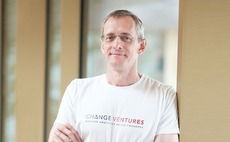
Funds-of-funds: A bifurcating market

While the 2005-2008 private equity boom is most commonly associated with the surging activity in Europe’s buyout markets, other areas, including the fund-of-funds segment, witnessed the same unsustainable growth and have felt the same shuddering crash. How has this important area of the market responded to the vastly different investment conditions we see in the post crisis market? Julian Longhurst investigates.
The feeding frenzy that characterised European private equity in the 2005-2008 period affected all areas of the market: even the volume and value of venture deals more than doubled in that period, although it was the buyout market that saw the most unsustainable increases. This huge growth rate of capital deployment meant that funds-of-funds became an increasingly important means of achieving scale and diversity for both experienced LPs and a new wave of first time retail and institutional investors. As a consequence, there was a major proliferation of fund-of-funds vehicles.
However, the Lehmans-driven crash and the subsequent shutting down of fundraising markets has dramatically altered the landscape for funds-of-funds everywhere and the current environment cannot sustain the population of such vehicles that existed three years ago. So all eyes have been on how the fund-of-funds market will emerge out of the carnage.
To date, much of the talk has focused on consolidation within the segment, but with a few notable exceptions (Hermes/Gartmore and Pantheon/Affiliated Managers Group), very little has actually happened. As one fund-of-funds manager says: "Everything is eerily quiet at the moment and there are probably a large number of funds-of-funds that are in trouble, particularly those that might have relied on one large sponsor or a captive parent."
What there is, however, is evidence of an increasingly sharp polarisation in the market between the huge multi-platform programmes with global capabilities and the much smaller, niche strategy players. At a time where performance among mainstream European private equity is struggling, the former will clearly appeal to the larger institutional investors looking to tap into the most promising funds in high-growth emerging markets such as China, India, South East Asia and perhaps Brazil. Investing with these large brands will also gain participants a diversification in product terms, with a mix of primaries, secondaries and direct investments.
At the other end of the scale the players are much more likely to be targeting premium returns via highly-specialised niche offerings, typically aligned down industry- or operationally-driven strategies. It is these groups that will seek to tap into the wave of specialist funds that are emerging in the post-crisis era. According to the founder of one such fund-of-funds: "Many institutions are too big to be able to back the new wave of small, specialist funds effectively, while others are too small to achieve reasonable diversification across the segment".
It appears likely that in the new market dynamic, life for the small number of participants at the top end of the scale will be comparatively comfortable given the scale and depth of their offerings. Meanwhile, at the other end of the size range the market will also be able to support a population of high-performing operators with niche propositions. The problems will be for those that occupy the middle ground and it is almost certain that the landscape will look very different just a few years down the line.
Latest News
Stonehage Fleming raises USD 130m for largest fund to date, eyes 2024 programme
Sponsor acquired the public software group in July 2017 via the same-year vintage Partners Group Global Value 2017
Stonehage Fleming raises USD 130m for largest fund to date, eyes 2024 programme
Czech Republic-headquartered family office is targeting DACH and CEE region deals
Stonehage Fleming raises USD 130m for largest fund to date, eyes 2024 programme
Ex-Rocket Internet leader Bettina Curtze joins Swiss VC firm as partner and CFO
Stonehage Fleming raises USD 130m for largest fund to date, eyes 2024 programme
Estonia-registered VC could bolster LP base with fresh capital from funds-of-funds or pension funds









